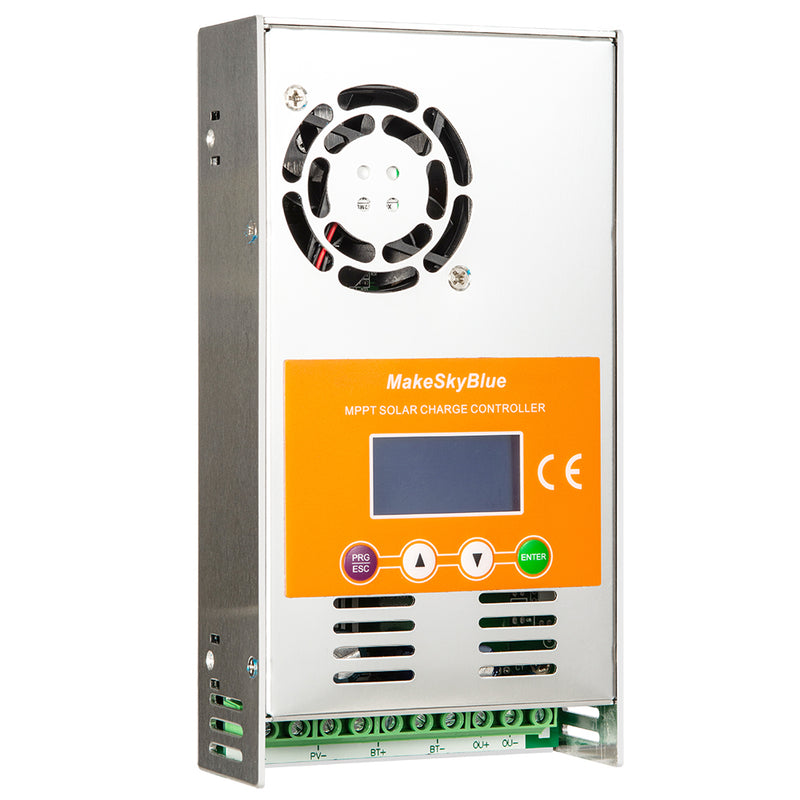Actually, I think I will be alright, but I definitely need help on fusing concerns!
Okay, here's the run down. We are planning on putting 16 265w panels on a full sun roof. Stats are here:
We only have 4 batts to start, 12vDeep Cycle, wired to 24v. Then we have 2 4000w 24v Giandel inverters that we will run our AC loads from. And we are looking at hooking up an ATS to this as well. We are mainly concerned with running a fridge and a freezer off each line. We thought the ATS would help ensure we have enough to keep those appliances going. Lights and ceiling fans would be good as well! All other large appliances are propane, water heater, clothes dryer, stove. Everything is wired to standard grid AC. We're planning on just putting in an extra distribution box for the solar right next to the grid power distribution panel.
I know we need more batteries, but this is all we can get right now. Maybe next month we can add 4 more. I hope. We were thinking the ATS would be beneficial to us due to the too shallow battery bank. Thoughts?
First, does this framework sound okay?
And then on the fuses, I am a bit confused. The charge controllers say to put a 100 amp fuse between the CC and the battery bank and to use 2 10g wires. Huh? And then there is no suggestion on fuse sizing between the panels and the charge controllers.
I know you don't want to overpanel too much as it endangers all your other components. These say 1440w and we're looking at 1590w on the 6 panel strings. The CC's specs are here:

 makeskyblue.com
makeskyblue.com
Is that too much in overpaneling realm? We're in SC Missouri.
Thanks very much and I am ready and willing to take warnings, input, and correction. And also any advice on what size fuses I should actually use!
Okay, here's the run down. We are planning on putting 16 265w panels on a full sun roof. Stats are here:
- Open circuit voltage (VOC): 44.20 V
- Max power voltage (VMP): 35.33 V
- Short circuit current (ISC): 8.20 A
- Max power current: 7.50 A
- Power Tolerance 0/+3%
- Maximum system voltage: 600V (UL)
- Fuse Rating: 15 A
We only have 4 batts to start, 12vDeep Cycle, wired to 24v. Then we have 2 4000w 24v Giandel inverters that we will run our AC loads from. And we are looking at hooking up an ATS to this as well. We are mainly concerned with running a fridge and a freezer off each line. We thought the ATS would help ensure we have enough to keep those appliances going. Lights and ceiling fans would be good as well! All other large appliances are propane, water heater, clothes dryer, stove. Everything is wired to standard grid AC. We're planning on just putting in an extra distribution box for the solar right next to the grid power distribution panel.
I know we need more batteries, but this is all we can get right now. Maybe next month we can add 4 more. I hope. We were thinking the ATS would be beneficial to us due to the too shallow battery bank. Thoughts?
First, does this framework sound okay?
And then on the fuses, I am a bit confused. The charge controllers say to put a 100 amp fuse between the CC and the battery bank and to use 2 10g wires. Huh? And then there is no suggestion on fuse sizing between the panels and the charge controllers.
I know you don't want to overpanel too much as it endangers all your other components. These say 1440w and we're looking at 1590w on the 6 panel strings. The CC's specs are here:

60A 12V 24V 48V Wifi MPPT Solar Charge Controller for Lead-acid battery V119
60A MPPT Solar Charge Controller with Wifi function for Android The Wifi is between MPPT Controller and Android phones only.Not the internet or cloud connection. V119=V118+Wifi Box 100% MPPT controller Intelligent Maximum PowerPoint Tracking technology Built-in DSP controller with high...
Is that too much in overpaneling realm? We're in SC Missouri.
Thanks very much and I am ready and willing to take warnings, input, and correction. And also any advice on what size fuses I should actually use!


